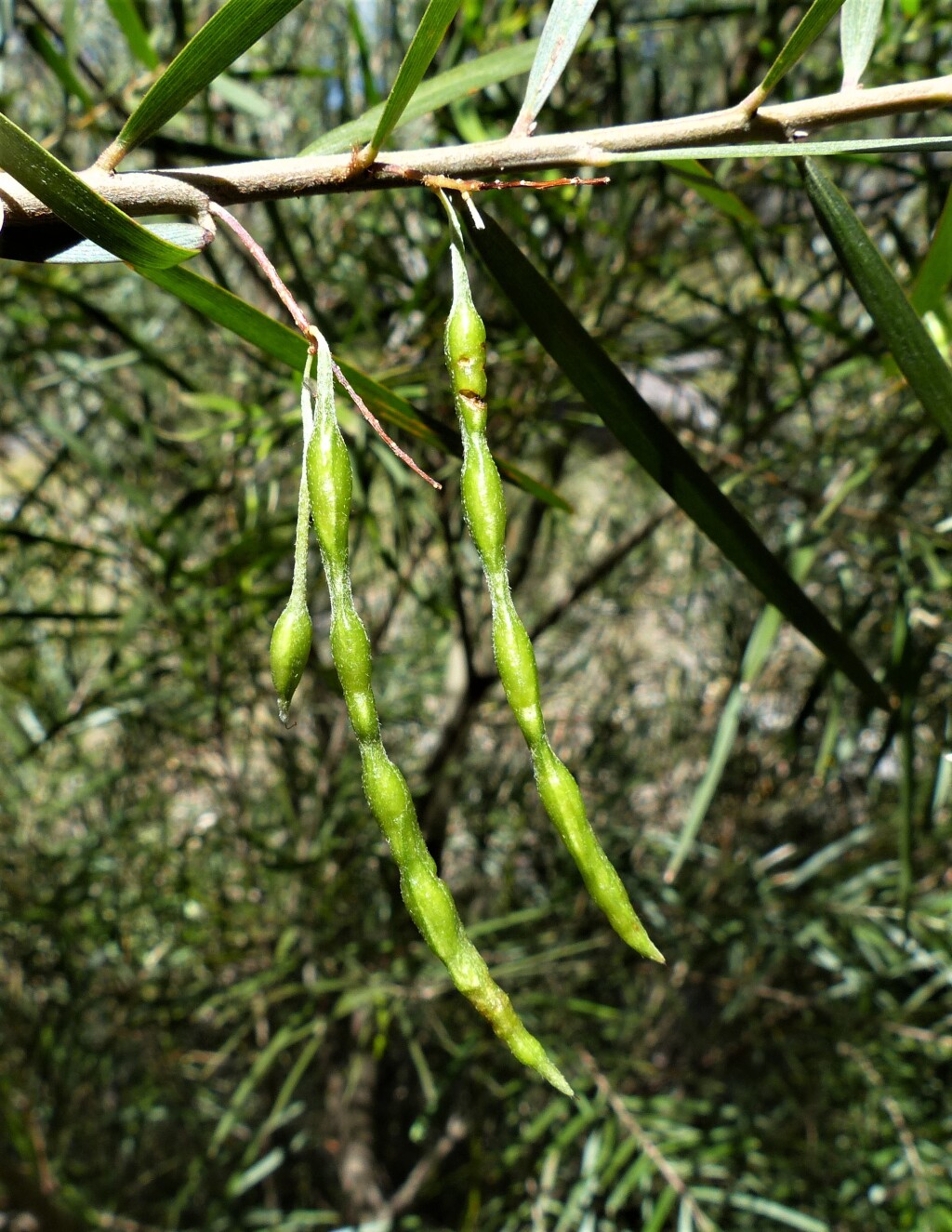Acacia floribunda
(Vent.) Willd. White Sallow-wattleSpreading shrub or tree, 2–8 m high. Phyllodes linear to narrowly lanceolate, 5–19 cm long, 2–10 mm wide, thin and pliable, acute and often minutely mucronate, sparsely covered in appressed hairs or some leaves glabrous; primary veins 1–3, secondary veins 6–10, parallel, sparingly reticulate; gland absent. Spikes 1–2 per axil, 2–8 cm long, cream to pale yellow; rachis usually visible between flowers, often finely pubescent; peduncle very short. Flowers 4-merous, loosely packed; sepals united, often ciliate. Pod subcylindric, 6–12 cm long, 2–4 mm wide, mostly staight, sometimes constricted between seeds, chartaceous; seeds elliptic, 3–5 mm long, glossy, brown, funicle folded about 4–8 times, aril small, irregularly thickened. Flowers Aug.–Oct.
VVP, VRiv, MuF, GipP, OtP, WaP, Gold, CVU, DunT, NIS, EGL, EGU, HSF, HNF, Strz, MonT, VAlp. Also Qld, NSW. Widespread in forests of East Gippsland (indigenous range extending westward to near Briagolong), mostly along the banks of streams. Also naturalised from cultivated sources outside this range.
Apparently hybridizes with A. oxycedrus in New South Wales.
Entwisle, T.J.; Maslin, B.R.; Cowan, R.S.; Court, A.B. (1996). Mimosaceae. In: Walsh, N.G.; Entwisle, T.J., Flora of Victoria Vol. 3, Dicotyledons Winteraceae to Myrtaceae, pp. 585–658. Inkata Press, Melbourne.
 Spinning
Spinning




